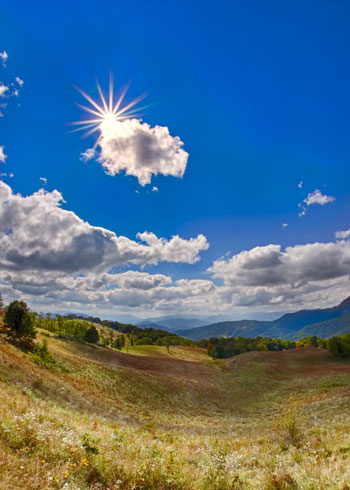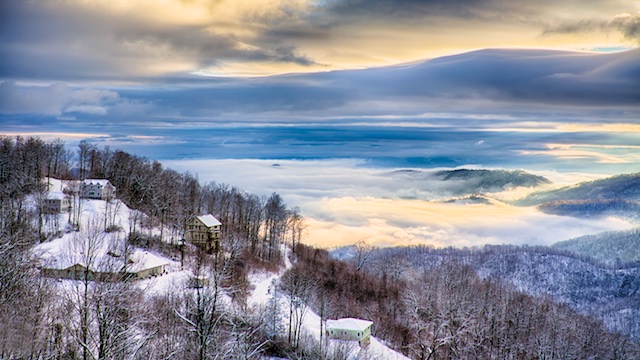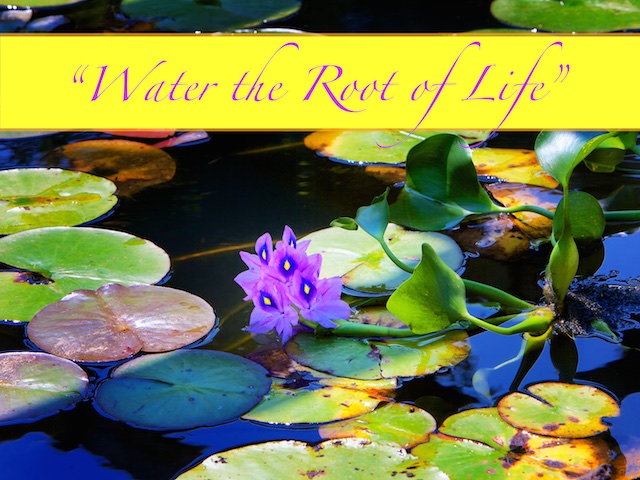by Michael Mamas | Saturday, March 28, 2015 | The Gods |
I was asked the following question:
Is Ram a person’s name? If it is, is there any meaning by that name? Why do you use Surya Ram as the name of this meditation? Thank you!
 To which I respond:
To which I respond:
Beautiful question! All existence emerged from oneness… pure consciousness. Consciousness aware of itself as ‘other’ births duality. Consciousness continues to interact with itself birthing multiplicity. The structure is very precise… One to two to three on to infinity. The self interaction creates movement and vibration… a symphony of sound. Each sound carries a particular quality… a particular aspect of Oneness, of wholeness… of what is called the Veda… of what is called ‘Being’.
The sound ‘Ram’ is the quality of the resplendence and integration of the entire structure of Veda. It permeates everything in creation with the fullness of life found at the source of existence, your existence. Ram awakens all things to their essence… to oneness… to wholeness.
The sound ‘Surya’ means central Sun. Just as the sun is the source of our solar system, Surya emphasizes the central value as it emerges and holds together all of life and existence.
The difference between Ram and Surya is best studied by learning more of each of their natures. Everything in existence has a personified aspect. That is why it is natural to give your boat, car, golf putter, rifle, etc. a name. As your relationship with anything deepens, it takes on a personified quality. So Ram and Surya do have personified aspects which highlight the subtle distinctions between the two. At the same time, Ram and Surya are one and the same… they are both Oneness… pure consciousness.
However, meditation is a mechanic… a technology. It is the sound itself that resonates with the essential nature of the body, mind, and soul. So for the purpose of the mechanic, it is important that it is related to as simply a meaningless sound.
We use the name Surya Ram meditation to emphasize that this meditation awakens you to You… to YOUR true essential nature… to the central Sun of your own unique Being. It imposes nothing. It simply awakens.
© Michael Mamas. All rights reserved.
by Michael Mamas | Wednesday, March 11, 2015 | Vedic Technology |
I believe it was 33 years ago, 1982 as best I can recall. I was living in the ashram when someone told me that in the Vedic literature the instructions exist– how to building an enlightened city. Every detail was covered. For a reason unknown to me at the time, this information struck me very deeply. I marveled over the idea. I wondered why, if this knowledge exists, there is no such city on the face of the earth.
I started my school in 1994. Students who were with me then now tell me they recall me talking about the Enlightened City idea that very first year. I do not recall doing so. Then years later, I decided to build an Enlightened City. Based upon the parameters I could remember, I found a piece of property that conformed. I called it Mount Soma… a mountain of Soma. Soma means Divine Nectar. Though I asked many pandits if they could help me, none of them seemed to know anything about Enlightened Cities. As time passed, I decided to put a Shiva Linga in the very center of the city. I imagined we would just build an inexpensive garage sort of structure to house it in. One thing led to the next and it turned out that we built a complete Shiva Temple with all the details called out by the Vedic architects (Sthapatis).
It was at that time that I met Sthapati Santhana Krishnan (SK). He was from the organization with V. Gananpati Sthapati, a world-renowned Vedic architect. SK designed our Shiva temple for us. Remarkably, around that time, I consulted with a Bhrigu Nadi in India. He had no idea who I was. Yet he told me I would be building such a city. I was amazed. How could he possibly know that?!
Now here is something perhaps even more remarkable: SK (the very Vedic architect we used to build the Shiva Temple!!) and Ganapati Sthapati have, and are translating, the original texts from Mamuni Mayan and his devotee Manasara. It is those texts that contain the knowledge of how to build an Enlightened City! Furthermore, those texts say that the Enlightened City we want to build must have a Shiva Temple right in the center. I was floored! What if we put a Durga or Ganesh temple there!?
After that, it seemed every pandit I spoke with knew about Enlightened City design. It was as if the knowledge was being withheld from me until I found knowledge of it within my own self.

© Michael Mamas. All rights reserved.
by Michael Mamas | Saturday, March 7, 2015 | Spiritual Evolution, Vedic Technology |
Vasudhaiva Kutumbakam (from Maho Upanishad) means “the whole world is one family”. If all nations, if all people, could simply work together in harmony, we would have heaven on earth.
The healthy family unit is essential to life. The world family must not be a dysfunctional family. But a healthy world family will not be attained by continually trying to mold world affairs to conform to a set of rules. That is like painting the leaves of a tree green in an attempt to make the tree healthy. The root must be tended to.
If we properly tend to the root of life, all of life will be healthy. Bringing that forth for the family of all humanity is the goal and purpose of Mount Soma. It is attainable. In fact, what is amazing is not that that is a possibility. What is amazing is that humanity does not live in accord with that simple principle.
The surface of life offers an unlimited array of polarizing perspectives and simplistic viewpoints. Tending to life solely on that level will never work.
Water the root to enjoy the fruit of life. This does not result in a homogenous worldview shared by all cultures. Quite the contrary. It nourishes the diversity of cultures in the midst of mutual respect and harmony between them. After all, the whole world is one family.

© Michael Mamas. All rights reserved.
by Michael Mamas | Saturday, February 7, 2015 | The Veda |
 Consider the following Vedic quote:
Consider the following Vedic quote:
Richo akshare parame vyoman yasmin deva adhi vishve nisheduh,
Yastanna veda kim richa karishyatiya it tad vidus ta ime samasate.
(Rig Veda, 1.164.39)
This essentially means that the knowledge of life (Vedic Knowledge) is rooted in awareness of the Transcendental level of life. It then points out that without awareness of that level, the meaning of Vedic literature slips through ones fingers. It asks the question, “If a person is not established in the transcendental level of life, what use are the verses of the Veda to him?” In other words, knowledge of life is not found in the memorization of facts, verses, or words. It lies deeper. It is more elusive. Repetition of wise words does not mean a person is wise. Wisdom lies deep within.
Now consider the following Vedic quote:
To the enlightened brahmin all the
Vedas are of no more use than is a
small well in a place flooded with
water on every side.
– Bhagavad Gita Chapter 2 Verse 46
Combining these verses can be viewed as a perplexing problem. The unenlightened cannot comprehend the Veda so what use is it to them? The enlightened already understand the Veda so they have no need for it. They already have ‘it’ so what use is it to them?
Just as these verses say, the resolution lies not in the surface but in the depth. Comprehension lies in the depth… in the transcendental level. It points out that ultimately a knower of Veda is not one who has memorized the texts or chants or Sanskrit language. A knower of Veda is one whose awareness is established in the transcendental level of life, even if he has never even read a single word of Vedic literature.
Of course, if ones relationship with the Vedic texts is wise, they can be used as a catalyst to assist one in awakening to the transcendental level. On the other hand, if the relationship is not wise, one may consider himself to be a knower of Veda, even a Vedic scholar, simply because the verses have been memorized. Consider the Vedic texts to be elusive Secret Doctrines. But understand that they are not secret because they are hidden away. They are secret because even after one reads and memorizes them, they remain a secret to that person.
Of course, the enlightened find great joy in reading the Vedic literature. They rest in the beauty, insight and knowledge of the words. They also find them of great value in assisting others to awaken to the transcendental level of life. Do not sell yourself short. The truth of the Veda dwells within you as You! You are a divine being. Spiritual growth means awakening to that… awakening to your true nature… the Truth that is found in the depth of Vedic Knowledge… the Truth of your Divine Nature.
© Michael Mamas. All rights reserved.
by Michael Mamas | Wednesday, December 17, 2014 | The Veda |
 As I read through Vedic Scripture, I see every sentence as elusive, so easily slipping through the fingers of the reader.
As I read through Vedic Scripture, I see every sentence as elusive, so easily slipping through the fingers of the reader.
Better to understand one line, than to memorize many. Yet understanding is not a set of concrete thoughts or perspectives… it is a place… of unending humble reflections within… without edges, without handles, ungraspable, yet full.
Consider the following:
Never be idle in your studies.” – Taittireeya Upanishad 1.11
What does ‘studies’ mean here? Isn’t every moment an ardent study for the wise, regardless of what they are doing? ‘Laughter, play, frivolity, or earnest academics… it doesn’t matter.
Isn’t no moment a study for the unwise, regardless of what they are doing?
Yet to not be idle does not mandate effort. It is the path of joy. Everything is profound, beautiful, and fascinating for the wise. The greatest emotion is fascination. Fascination is the root of all positivity in life. It makes the world spin around.
“Willed by whom does the directed mind go towards its object?” – Kena Upanishad
The only possibilities here are dharma, karma, or some combination of the two.
Action established in Being or action determined by karma.
Indeed, Dharma, in its truest sense is freedom. Yet some think of Dharma as bondage.
The ‘whom’ that directs the mind is the Self, if Dharmic.
The ‘whom’ that directs the mind is the Lord of Karma, if not Dharmic.
Dharma is the freedom of living ones true nature. Karma is that which shrouds ones nature. The confused often blur the two.
The number of such knots people tie themselves in is without limit.
Here is another example. If asked the question to what degree you are free, the wise person knows that question cannot be answered and thereby is free. Upon hearing the response of the wise, the unwise may choose not to answer the question and thereby considers himself free.
The beauty of knowledge ultimately lies in its elusive nature.
© Michael Mamas. All rights reserved.
 To which I respond:
To which I respond:


 Consider the following Vedic quote:
Consider the following Vedic quote: As I read through Vedic Scripture, I see every sentence as elusive, so easily slipping through the fingers of the reader.
As I read through Vedic Scripture, I see every sentence as elusive, so easily slipping through the fingers of the reader.